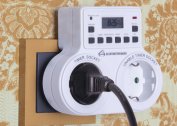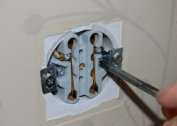A good wiring connection is an essential requirement for home safety. Unreliable contact can lead to short circuit and fire, so it is important to be able to connect two conductors in a junction box with high quality and reliability. There are different methods for creating a contact, and all of them have their own characteristics.
The need for a reliable connection
First of all, you need to understand why it is so important to pay attention to the reliability of connecting conductors. Even PUEs give recommendations on the choice of connection method and strictly prohibit the twisting of wires.
Consequences of improperly connected conductors:
- Fire. Poor contact has a large transition resistance. This leads to heating, which can subsequently lead to fire.
- Damage to the wiring. Due to the high resistance, the conductor heats up faster. As a result, the insulation may melt and the contact itself may break. Violation of the insulation layer may result in electric shock.
- Short circuit. Also depends on the magnitude of the transition resistance.
A large transition resistance leads to negative consequences. Therefore, it is important to reduce it, for which the permitted methods of connecting multicore conductors are used.
Connection Methods
Of the allowed methods, the PUE allows you to create a contact in the following ways:
- clamps;
- terminals
- crimping;
- soldering, welding.
Twisting is prohibited. This is due to the fact that the contact will be exposed to temperature. With increasing temperature, the material expands, while cooling, on the contrary, narrows. Since the contact is not fixed by anything, it will quickly fail and collapse. Twisting can only be used in conjunction with another connection method - for example, welding or soldering.
Compression method
This method includes screw and bolt connections, as well as contact using Wago clamps. Such mechanisms make it possible to connect single-core and multi-core copper wire. At the moment, this method is the most common and convenient. The advantages include low cost, reliability, simplicity of the process and the absence of the need to purchase additional equipment.
It is better to connect wires with a cross section up to 25 sq. Mm in this way. Conductors with a large cross-section require a different connection or it will be necessary to take into account the nuances of contact by the compressive method.
The screw connection is used for small cables. Its essence lies in installing two conductors in a brass tube and clamping each section with its own screw. When connecting single-core and multi-core cables, there is a risk of damage to the thin wire. For this reason, it is recommended to protect them with a special tip. There are special terminals with a clamping pad for which the use of ferrules is not required. They provide a high-quality clamp without damaging the wire over the entire cross section of the brass tube.
Wago terminals are a variation of the compression method. They are reliable, but experts are arguing about the durability of such products. Advantages - speed of work, quality of contact, simplicity.
Pressing method
Pressure testing of wires is carried out using a special tool - pincers. It is manual and hydraulic. For conductors with a small cross section, hand clamps are suitable.
Special sleeves made of copper, aluminum or brass will also be required.They are selected for the corresponding material of the cable cores. If you need to connect several stranded wires in front of the terminal block, lugs are used.
Pressing is used for all types of cables - multi-core, single-core, their combination. It is only important to choose the right type of sleeve and pressure.
Welding method
Welding wires is the most reliable and durable way to connect. Its disadvantage lies only in the difficulty of doing it yourself, since a professional welding machine will be required to work. Requirements are also made for the experience of the master - in the absence of the necessary skills, you should choose a different connection method or entrust the work to a professional.
Using a welding machine, the ends of the wires are melted. When they solidify, a single whole is formed between the two segments and high-quality contact is ensured. Using this method, you can connect an unlimited number of conductors at one point. But you need to understand that when contacting a single-core and multi-core cable, difficulties will arise. The master will have to complete several additional steps before welding. Connection of a four-wire wire to a single-core:
- Melting the end of a stranded wire.
- Connection of a molten conductor with a single-core segment.
In case of violation of the welding technique, burnout of individual cores may occur and contact will not be provided for all wires.
Soldering
For soldering two pieces of cable, additional tools will also be required - a soldering iron, rosin, solder, soldered grease. The master must be able to solder, otherwise reliable contact will not work.
How to twist a stranded wire together with a single-core:
- Stripping from isolation.
- Surface treatment of both conductors with rosin.
- Winding multi-core cable to single-core.
- Single-core cable bending, pliers crimping.
- Processing the place with solder grease and solder.
There is also a connection option when the treatment with grease and rosin is done separately for each part of the wire. Then the conductors are connected in parallel and the contact point is processed by solder.
Single core conductors are easier to connect. To do this, it is enough to clean them from insulation and treat with rosin. Then the cables need to be soldered. If a tinned single-core conductor is taken for connection, rosin treatment is not required.
Stranded wires are also stripped of insulation. This can be more difficult, since each core has its own insulation layer. Next, the conductors are connected by a pigtail or twist and processed by solder.
Flexible and hard wire connection
Usually conductors of the same type are connected. But sometimes a flexible and rigid wire connection is required, which is performed in compliance with some nuances.
First cut the cable so that its end is tapered. The hard wire must be melted and a loop made at its end. A thin wire is passed through a loop made and wrapped around a rigid cable. The resulting compound must be treated with solder and insulated reliably. A similar method is suitable for aluminum conductors.









